Interiors
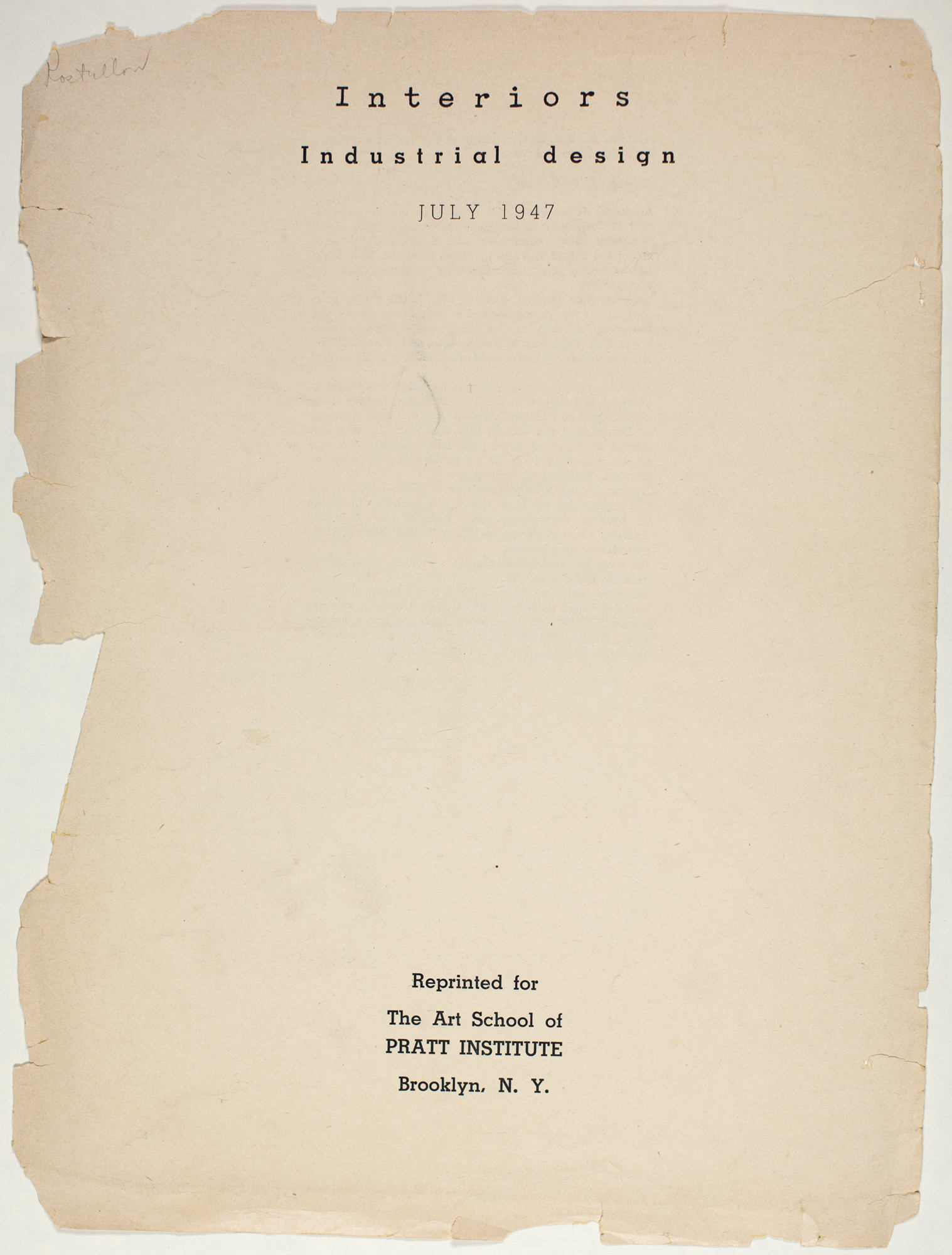
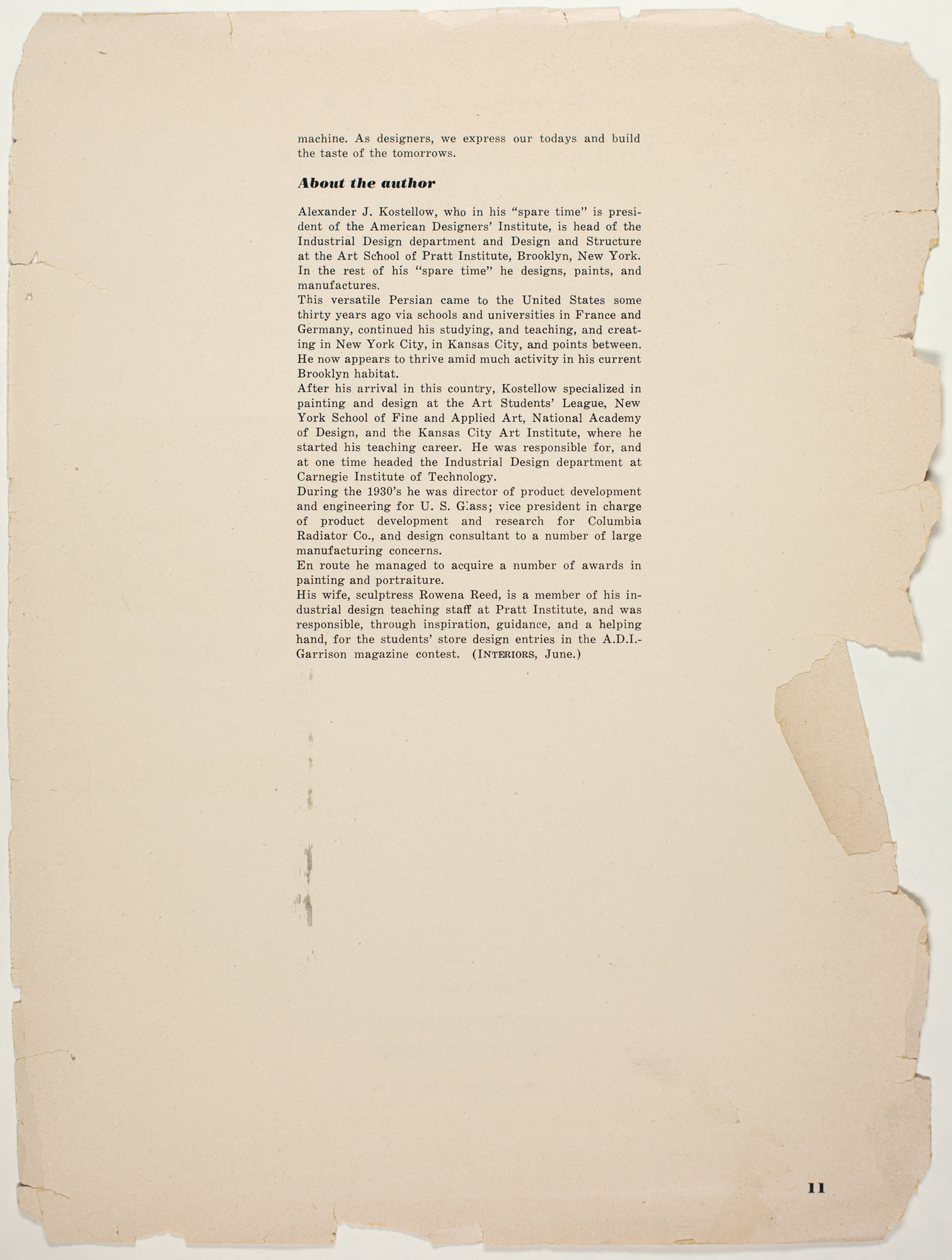
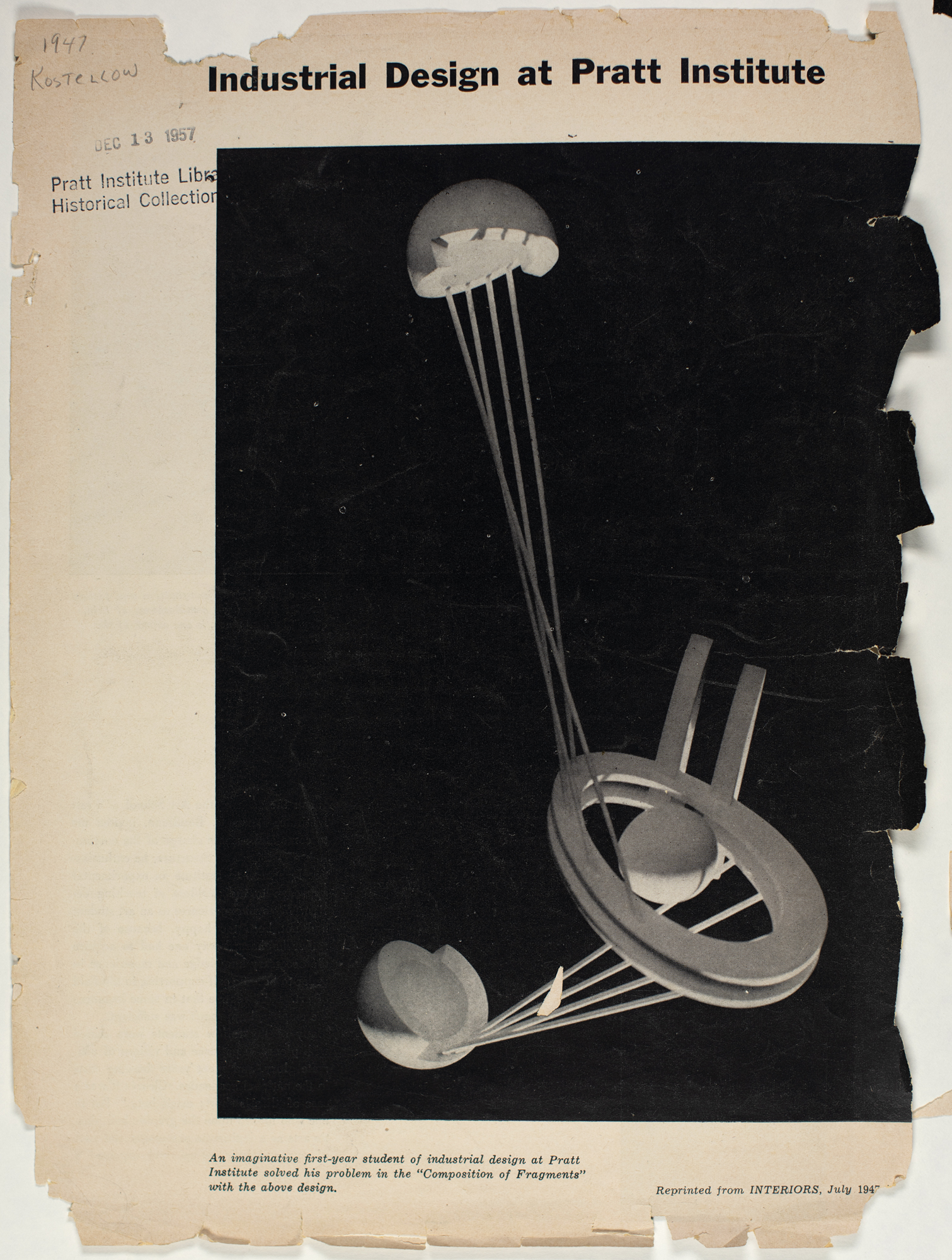
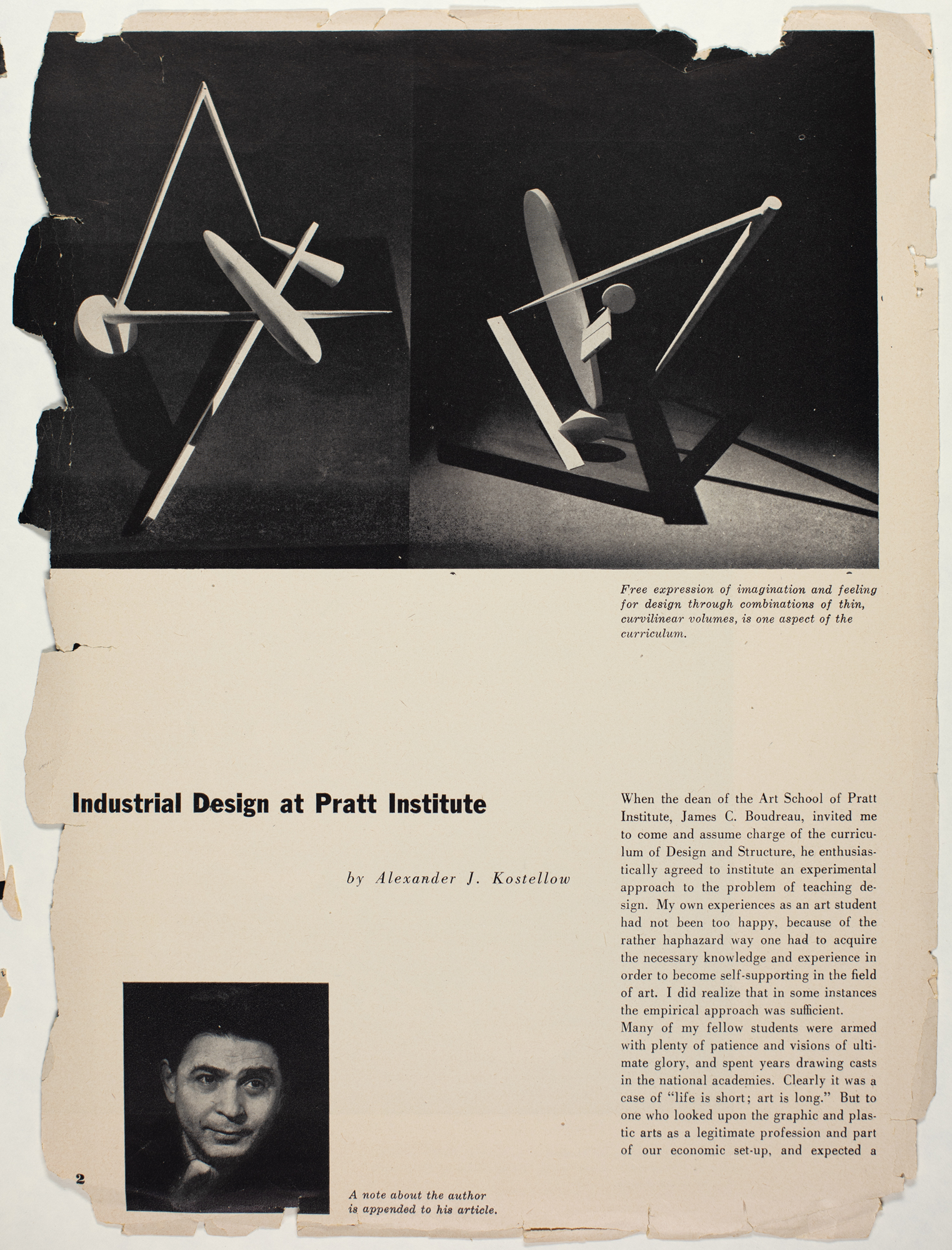
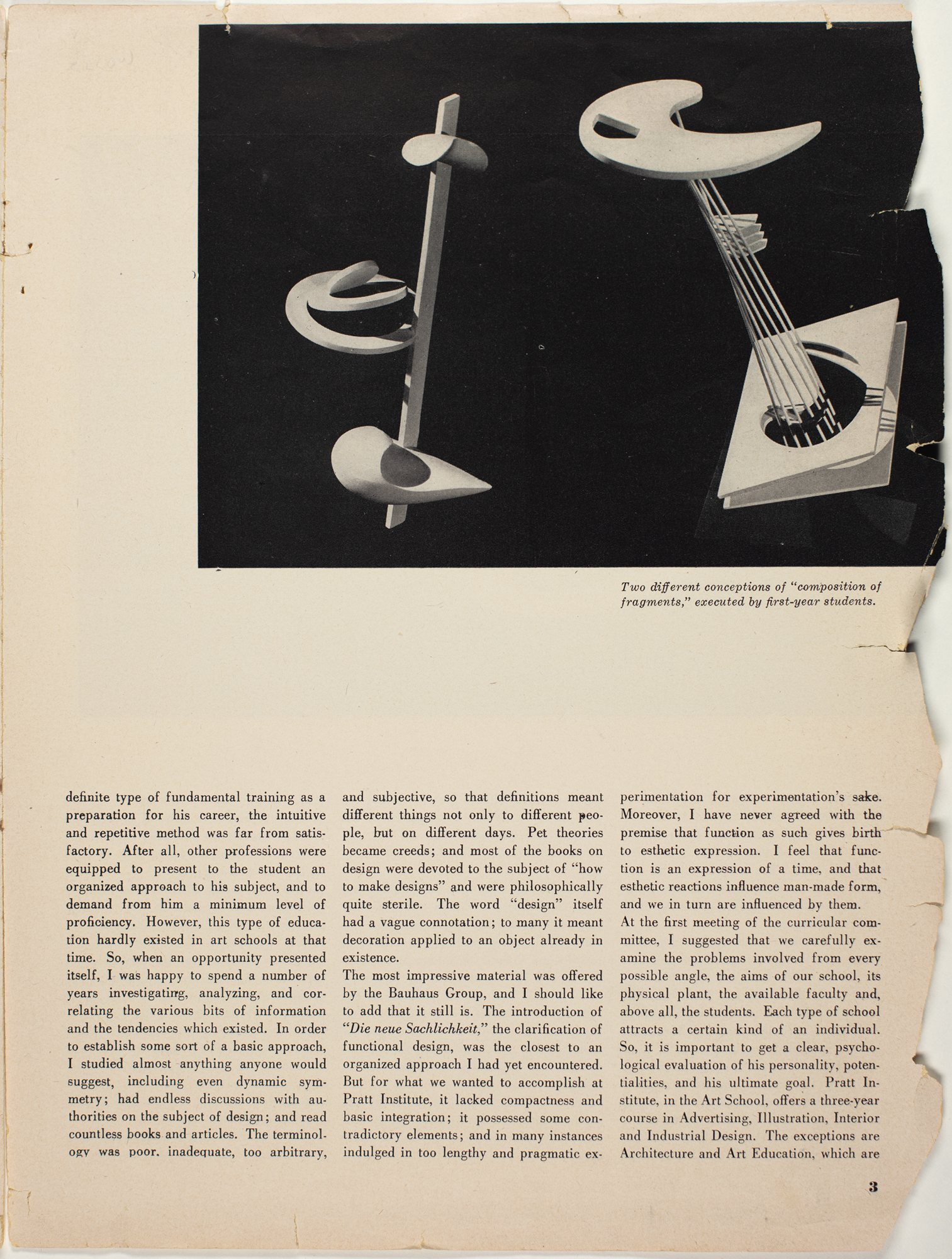
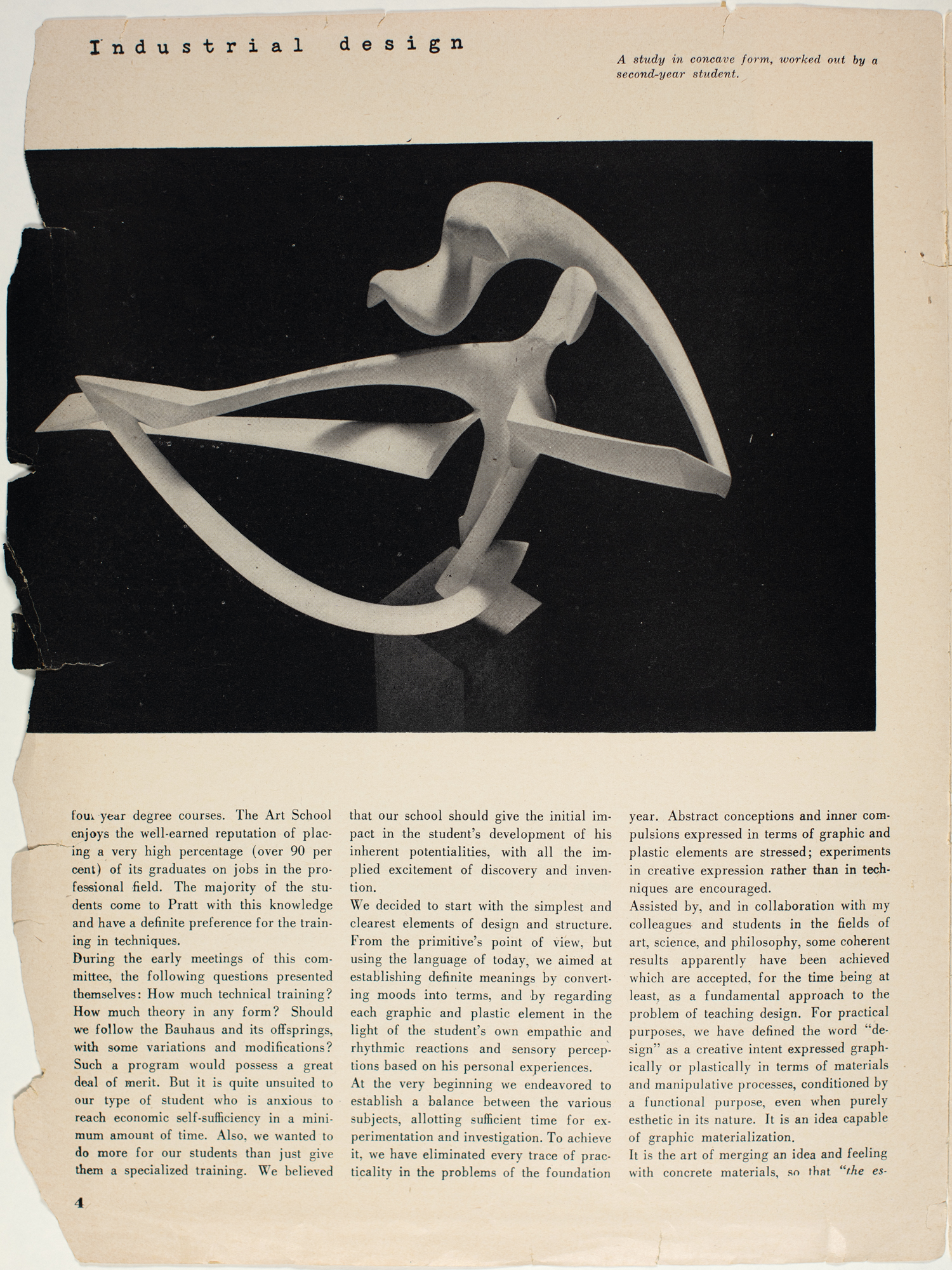
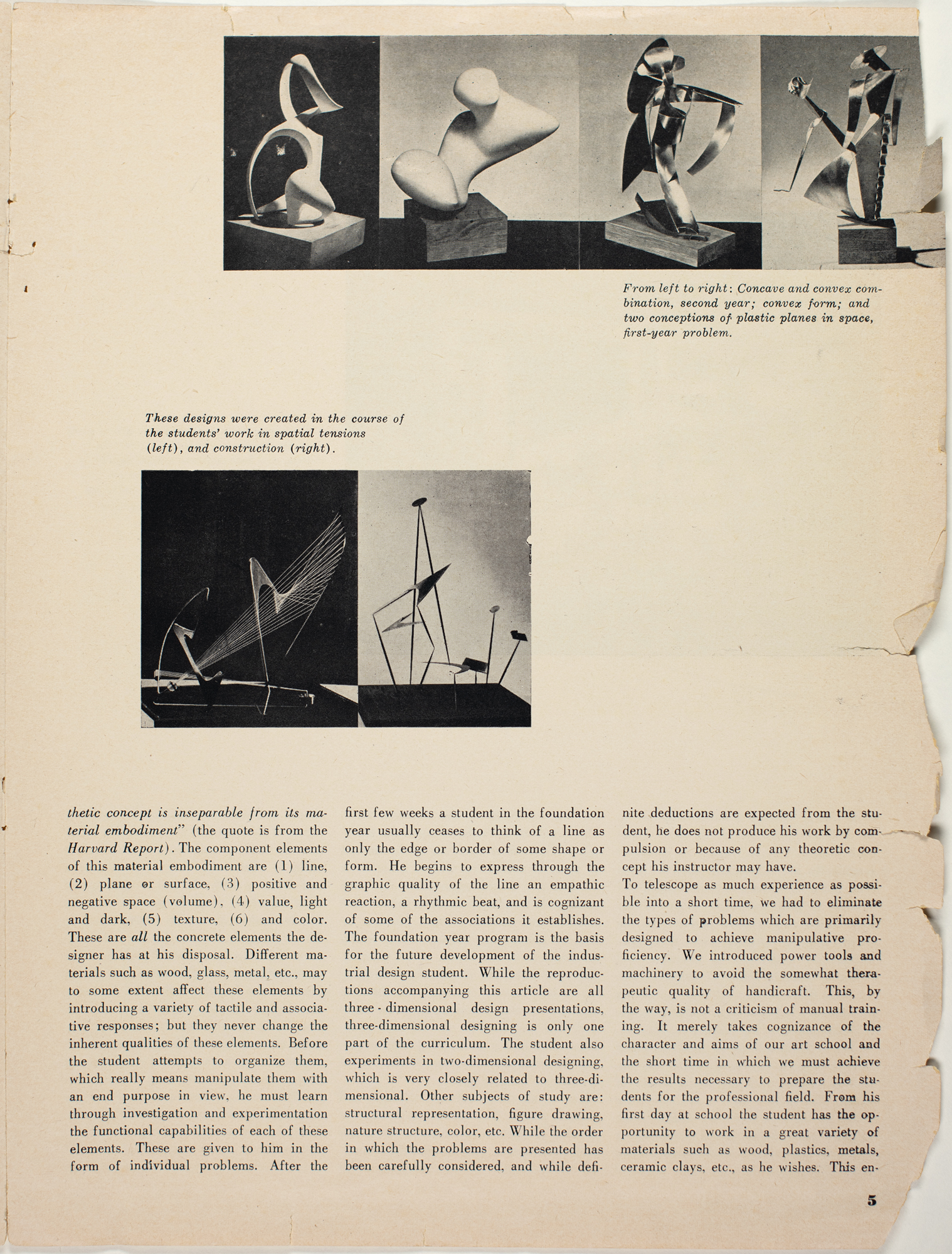
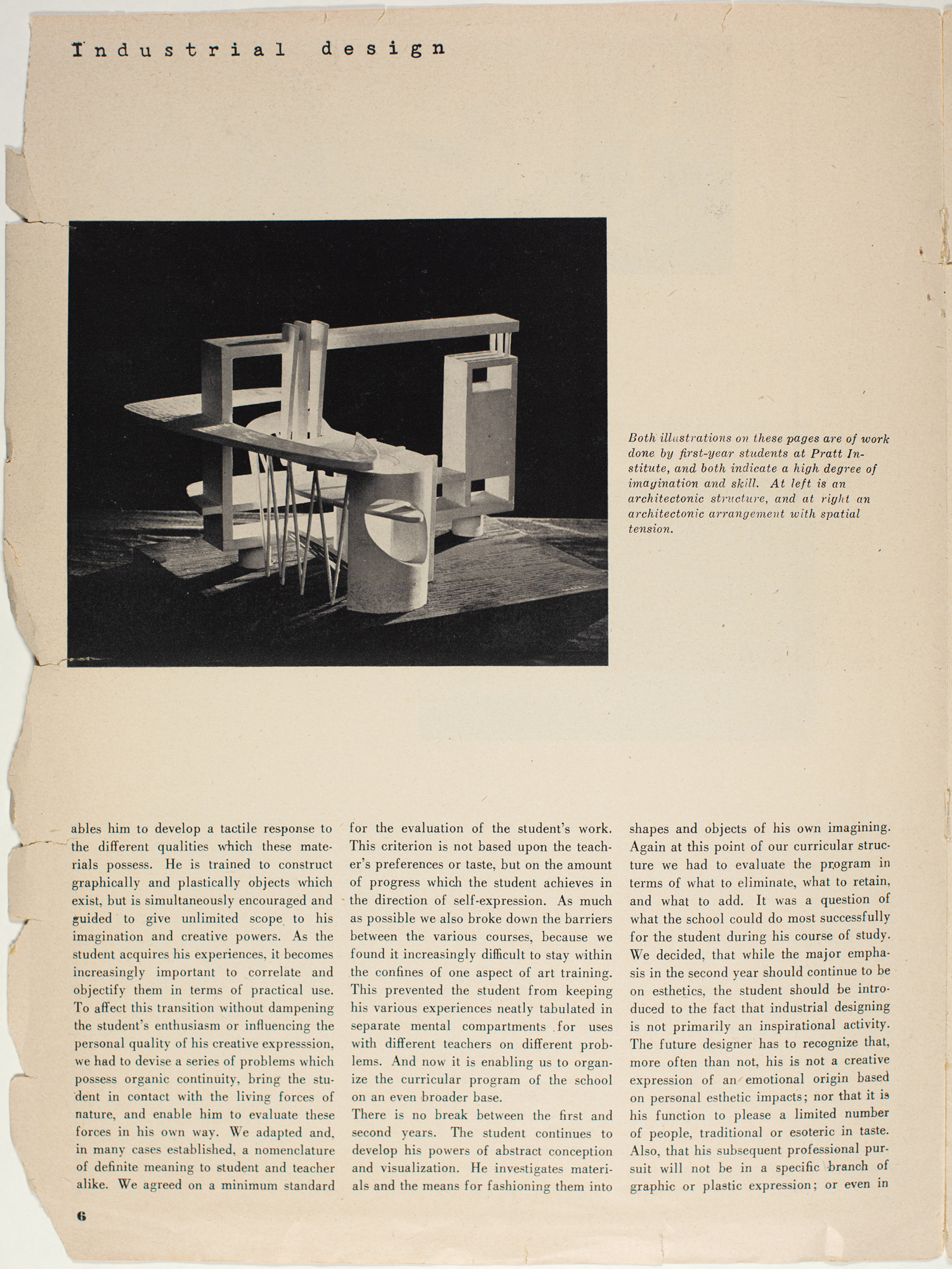
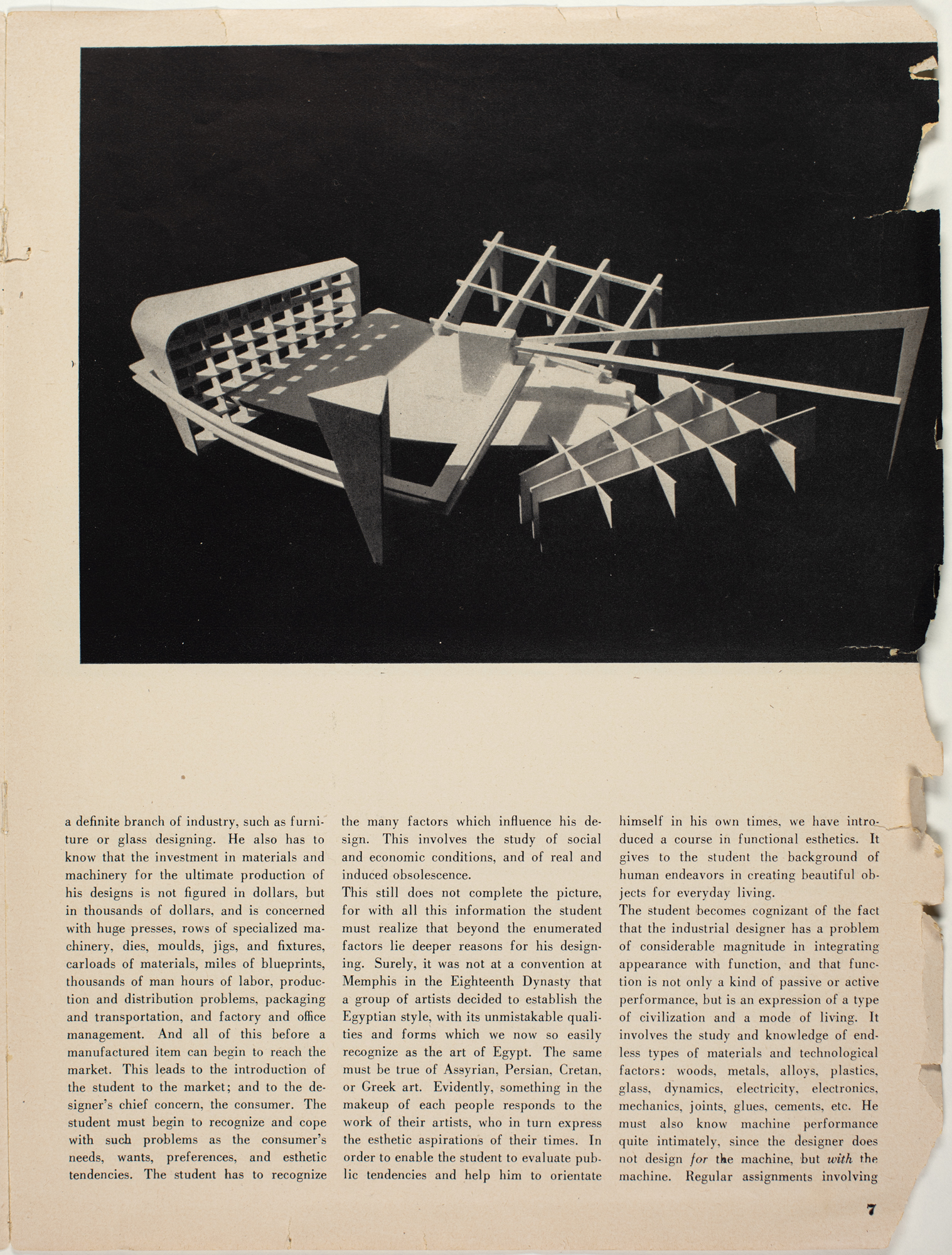
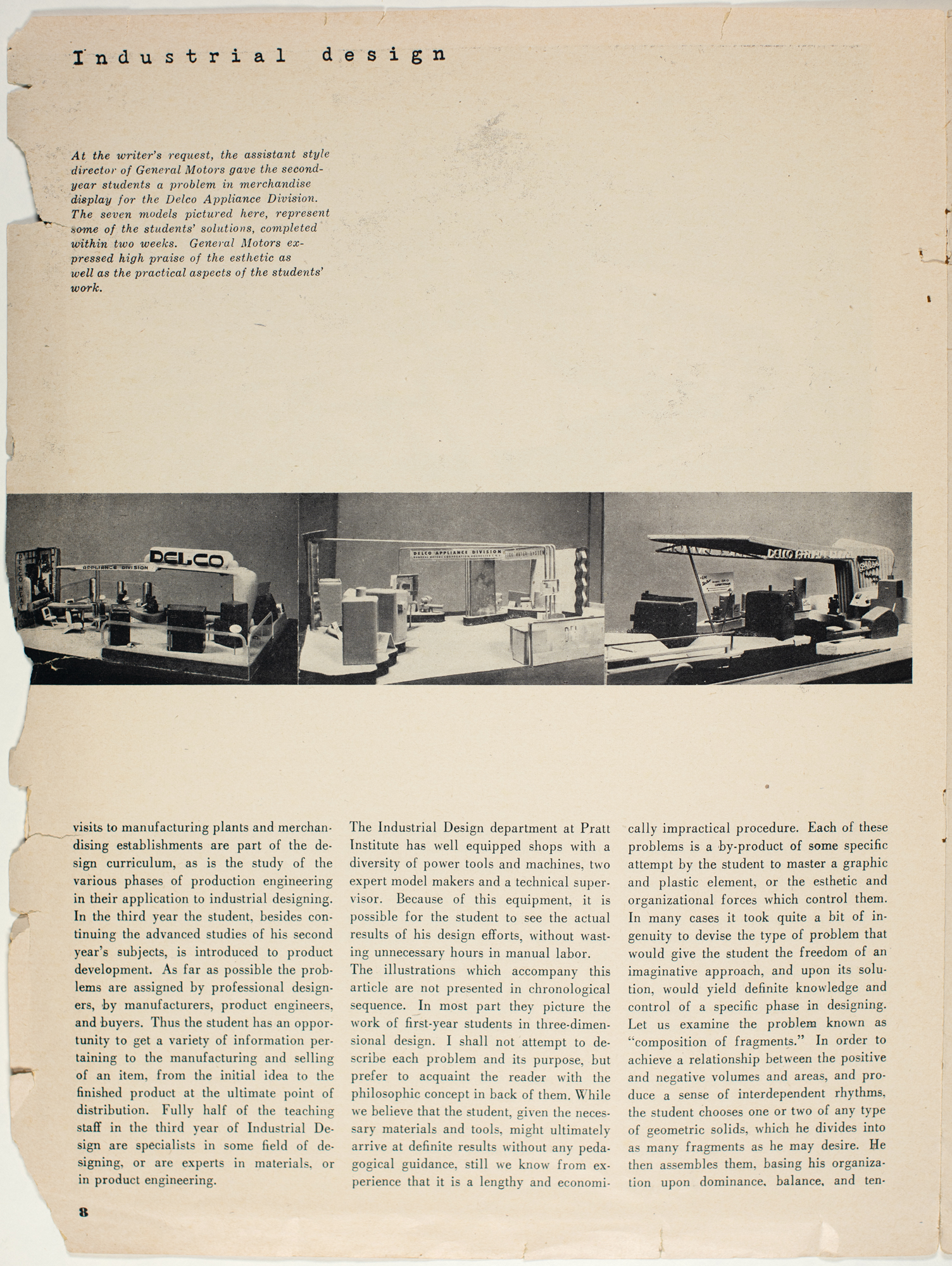
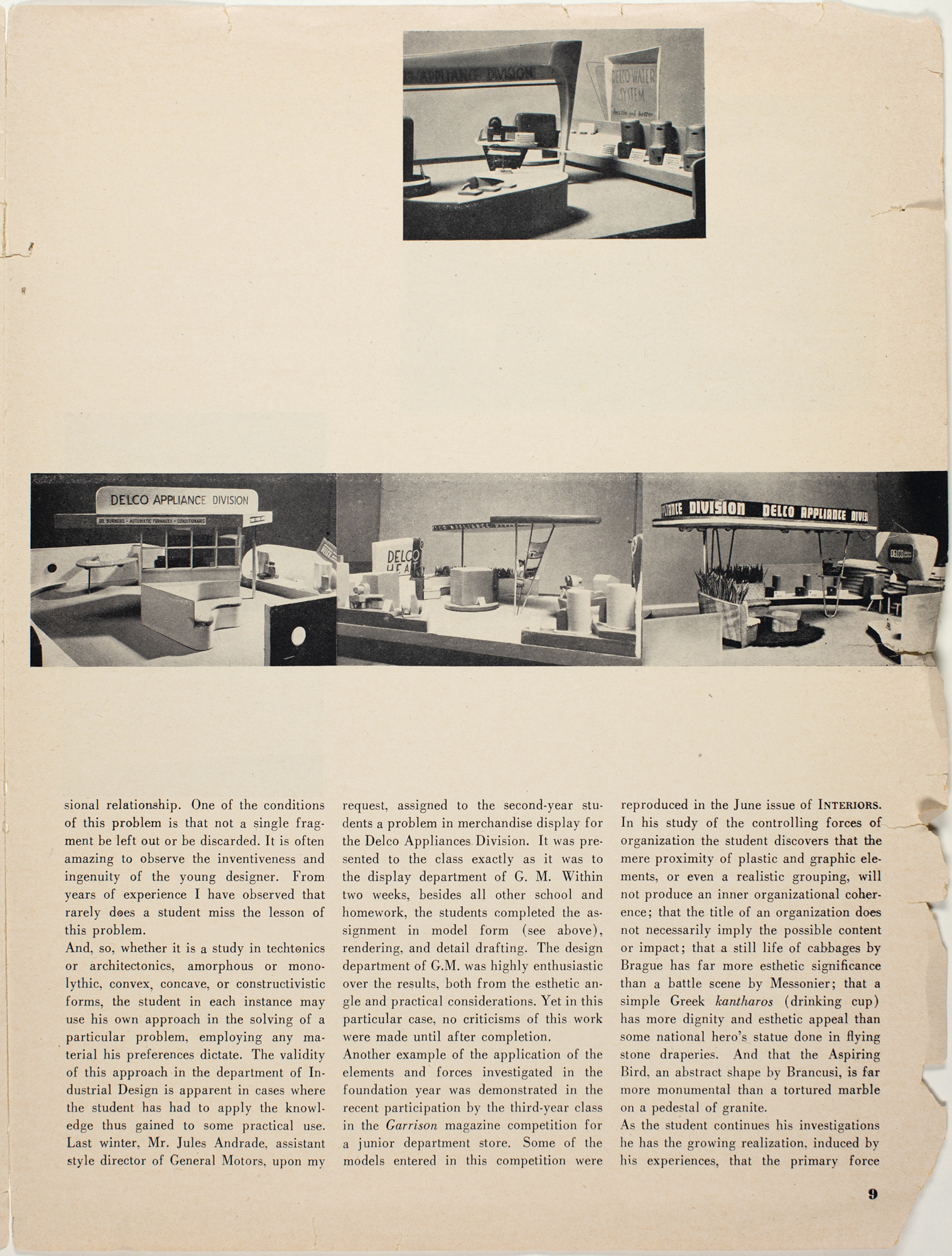
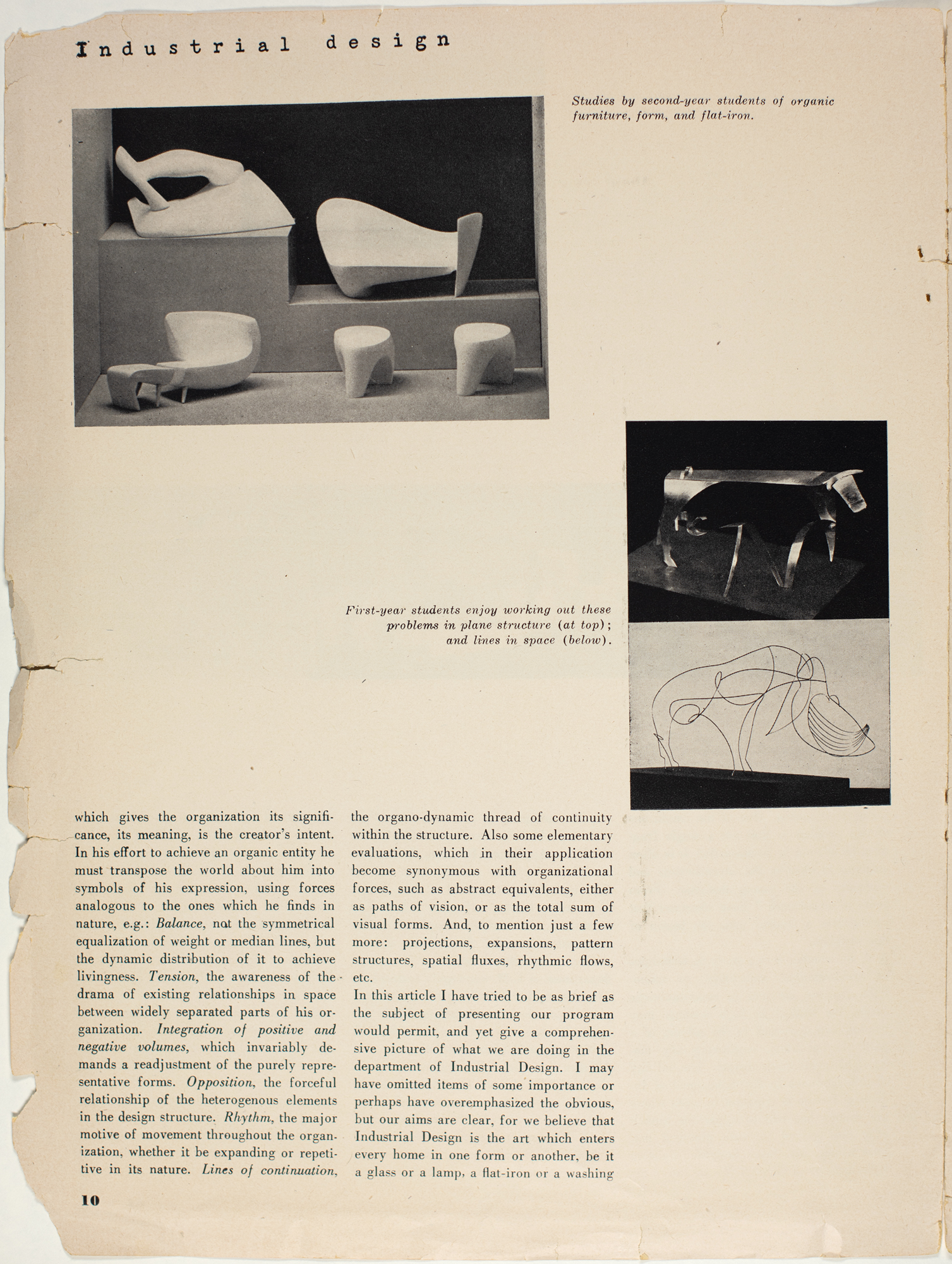
a magazine highlighting the Pratt Industrial Design department by Alexander Kostellow, July 1947
About the author
Alexander J. Kostellow, who in his “spare time” is president of the American Designers’ Institute, is head of the Industrial Design department and Design and Structure at the Art School of Pratt Institute, Brooklyn, New York. In the rest of his “spare time” he designs, paints, and manufactures.
This versatile Persian came to the United States some thirty years ago via schools and universities in France and Germany, continued his studying, and teaching, and creating in New York City, in Kansas City, and points between. He now appears to thrive amid much activity in his current Brooklyn habitat.
After his arrival in this country, Kostellow specialized in painting and design at the Art Students’ League, New York School of Fine and Applied Art, National Academy of Design, and the Kansas City Art Institute, where he started his teaching career. He was responsible for, and at one time headed the Industrial Design department at Carnegie Institute of Technology.
During the 1930’s he was director of product development and engineering for U. S. Glass; vice president in charge of product development and research for Columbia Radiator Co., and design consultant to a number of large manufact ing concerns. En route he managed to acquire a number of awards in painting and portraiture. His wife, sculptress Rowena Reed, is a member of his industrial design teaching staff at Pratt Institute, and was responsible, through inspiration, guidance, and a helping hand, for the students’ store design entries in the A.D.I.-Garrison magazine contest. (INTERIORS, June.)
Free expression of imagination and feeling for design through combinations of thin, curvilinear volumes, is one aspect of the curriculum. When the dean of the Art School of Pratt Institute, James C. Boudreau, invited me to come and assume charge of the curriculum of Design and Structure, he enthusiastically agreed to institute an experimental approach to the problem of teaching design. My own experiences as an art student had not been too happy, because of the rather haphazard way one had to acquire the necessary knowledge and experience in order to become self-supporting in the field of art. I did realize that in some instances the empirical approach was sufficient. Many of my fellow students were armed with plenty of patience and visions of ultimate glory, and spent years drawing casts in the national academies. Clearly it was a case of “life is short; art is long.” But to one who looked upon the graphic and plastic arts as a legitimate profession and part of our economic set-up, and expected a definite type of fundamental training as a preparation for his career, the intuitive and repetitive method was far from satisfactory. After all, other professions were equipped to present to the student an organized approach to his subject, and to demand from him a minimum level of proficiency. However, this type of education hardly existed in art schools at that time. So, when an opportunity presented itself, I was happy to spend a number of years investigating, analyzing, and correlating the various bits of information and the tendencies which existed. In order to establish some sort of a basic approach, I studied almost anything anyone would suggest, including even dynamic symmetry; had endless discussions with authorities on the subject of design; and read countless books and articles. The terminology was poor. inadequate, too arbitrary, and subjective, so that definitions meant different things not only to different peo- ple, but on different days. Pet theories became creeds; and most of the books on design were devoted to the subject of “how to make designs” and were philosophically quite sterile. The word “design” itself had a vague connotation; to many it meant decoration applied to an object already in existence.
The most impressive material was offered by the Bauhaus Group, and I should like to add that it still is. The introduction of “Die neue Sachlichkeit,” the clarification of functional design, was the closest to an organized approach I had yet encountered. But for what we wanted to accomplish at Pratt Institute, it lacked compactness and basic integration; it possessed some contradictory elements; and in many instances indulged in too lengthy and pragmatic experimentation for experimentation’s sake. Moreover, I have never agreed with the premise that function as such gives birth to esthetic expression. I feel that function is an expression of a time, and that esthetic reactions influence man-made form, and we in turn are influenced by them.
At the first meeting of the curricular committee, I suggested that we carefully examine the problems involved from every possible angle, the aims of our school, its physical plant, the available faculty and, above all, the students. Each type of school attracts a certain kind of an individual. So, it is important to get a clear, psychological evaluation of his personality, potentialities, and his ultimate goal. Pratt Institute, in the Art School, offers a three-year course in Advertising, Illustration, Interior and Industrial Design. The exceptions are Architecture and Art Education, which area four year degree courses. The Art School enjoys the well-earned reputation of placing a very high percentage (over 90 per cent) of its graduates on jobs in the professional field. The majority of the students come to Pratt with this knowledge and have a definite preference for the train- ing in techniques.
During the early meetings of this committee, the following questions presented themselves: How much technical training? How much theory in any form? Should we follow the Bauhaus and its offsprings, with some variations and modifications? Such a program would possess a great deal of merit. But it is quite unsuited to our type of student who is anxious to reach economic self-sufficiency in a minimum amount of time. Also, we wanted to do more for our students than just give them a specialized training. We believed that our school should give the initial impact in the student’s development of his inherent potentialities, with all the implied excitement of discovery and invention.
We decided to start with the simplest and clearest elements of design and structure. From the primitive’s point of view, but using the language of today, we aimed at establishing definite meanings by converting moods into terms, and by regarding each graphic and plastic element in the light of the student’s own empathic and rhythmic reactions and sensory percep- tions based on his personal experiences. At the very beginning we endeavored to establish a balance between the various subjects, allotting sufficient time for experimentation and investigation. To achieve it, we have eliminated every trace of practicality in the problems of the foundation
year. Abstract conceptions and inner compulsions expressed in terms of graphic and plastic elements are stressed; experiments in creative expression rather than in techniques are encouraged. Assisted by, and in collaboration with my colleagues and students in the fields of art, science, and philosophy, some coherent results apparently have been achieved which are accepted, for the time being at least, as a fundamental approach to the problem of teaching design. For practical purposes, we have defined the word “design” as a creative intent expressed graphically or plastically in terms of materials and manipulative processes, conditioned by a functional purpose, even when purely esthetic in its nature. It is an idea capable of graphic materialization.
It is the art of merging an idea and feeling with concrete materials, so that “the esthetic concept is inseparable from its material embodiment” (the quote is from the Harvard Report). The component elements of this material embodiment are (1) line, (2) plane or surface, (3) positive and negative space (volume), (4) value, light and dark, (5) texture, (6) and color. These are all the concrete elements the de- signer has at his disposal. Different materials such as wood, glass, metal, etc., may to some extent affect these elements by introducing a variety of tactile and associative responses; but they never change the inherent qualities of these elements. Before the student attempts to organize them, which really means manipulate them with an end purpose in view, he must learn through investigation and experimentation the functional capabilities of each of these elements. These are given to him in the form of individual problems. After the
first few weeks a student in the foundation year usually ceases to think of a line as only the edge or border of some shape or form. He begins to express through the graphic quality of the line an empathic reaction, a rhythmic beat, and is cognizant of some of the associations it establishes. The foundation year program is the basis for the future development of the industrial design student. While the reproductions accompanying this article are all three dimensional design presentations, three-dimensional designing is only one part of the curriculum. The student also experiments in two-dimensional designing, which is very closely related to three-dimensional. Other subjects of study are: structural representation, figure drawing, nature structure, color, etc. While the order in which the problems are presented has been carefully considered, and while definite deductions are expected from the student, he does not produce his work by compulsion or because of any theoretic concept his instructor may have.
To telescope as much experience as possible into a short time, we had to eliminate the types of problems which are primarily designed to achieve manipulative proficiency. We introduced power tools and machinery to avoid the somewhat therapeutic quality of handicraft. This, by the way, is not a criticism of manual train- ing. It merely takes cognizance of the character and aims of our art school and the short time in which we must achieve the results necessary to prepare the students for the professional field. From his first day at school the student has the opportunity to work in a great variety of materials such as wood, plastics, metals, ceramic clays, etc., as he wishes. This enables him to develop a tactile response to the different qualities which these materials possess. He is trained to construct graphically and plastically objects which exist, but is simultaneously encouraged and guided to give unlimited scope to his imagination and creative powers. As the student acquires his experiences, it becomes increasingly important to correlate and objectify them in terms of practical use. To affect this transition without dampening the student’s enthusiasm or influencing the personal quality of his creative expression, we had to devise a series of problems which possess organic continuity, bring the student in contact with the living forces of nature, and enable him to evaluate these forces in his own way. We adapted and, in many cases established, a nomenclature of definite meaning to student and teacher alike. We agreed on a minimum standard for the evaluation of the student’s work. This criterion is not based upon the teacher’s preferences or taste, but on the amount of progress which the student achieves in the direction of self-expression. As much as possible we also broke down the barriers between the various courses, because we found it increasingly difficult to stay within the confines of one aspect of art training. This prevented the student from keeping his various experiences neatly tabulated in separate mental compartments for uses with different teachers on different problems. And now it is enabling us to organize the curricular program of the school on an even broader base.
There is no break between the first and second years. The student continues to develop his powers of abstract conception and visualization. He investigates materials and the means for fashioning them into shapes and objects of his own imagining. Again at this point of our curricular structure we had to evaluate the program in terms of what to eliminate, what to retain, and what to add. It was a question of what the school could do most successfully for the student during his course of study. We decided, that while the major emphasis in the second year should continue to be on esthetics, the student should be introduced to the fact that industrial designing is not primarily an inspirational activity. The future designer has to recognize that, more often than not, his is not a creative expression of an emotional origin based on personal esthetic impacts; nor that it is his function to please a limited number of people, traditional or esoteric in taste. Also, that his subsequent professional pursuit will not be in a specific branch of graphic or plastic expression; or even in a definite branch of industry, such as furniture or glass designing. He also has to know that the investment in materials and machinery for the ultimate production of his designs is not figured in dollars, but in thousands of dollars, and is concerned with huge presses, rows of specialized machinery, dies, moulds, jigs, and fixtures, carloads of materials, miles of blueprints, thousands of man hours of labor, production and distribution problems, packaging and transportation, and factory and office management. And all of this before a manufactured item can begin to reach the market. This leads to the introduction of the student to the market; and to the designer’s chief concern, the consumer. The student must begin to recognize and cope with such problems as the consumer’s needs, wants, preferences, and esthetic tendencies. The student has to recognize
the many factors which influence his design. This involves the study of social and economic conditions, and of real and induced obsolescence.
This still does not complete the picture, for with all this information the student must realize that beyond the enumerated factors lie deeper reasons for his designing. Surely, it was not at a convention at Memphis in the Eighteenth Dynasty that a group of artists decided to establish the Egyptian style, with its unmistakable qualities and forms which we now so easily recognize as the art of Egypt. The same must be true of Assyrian, Persian, Cretan, or Greek art. Evidently, something in the makeup of each people responds to the work of their artists, who in turn express the esthetic aspirations of their times. In order to enable the student to evaluate pub- lic tendencies and help him to orientate
himself in his own times, we have introduced a course in functional esthetics. It gives to the student the background of human endeavors in creating beautiful objects for everyday living.
The student becomes cognizant of the fact that the industrial designer has a problem of considerable magnitude in integrating appearance with function, and that function is not only a kind of passive or active performance, but is an expression of a type of civilization and a mode of living. It involves the study and knowledge of end- less types of materials and technological factors: woods, metals, alloys, plastics, glass, dynamics, electricity, electronics, mechanics, joints, glues, cements, etc. He must also know machine performance quite intimately, since the designer does not design for the machine, but with the machine. Regular assignments involving visits to manufacturing plants and merchandising establishments are part of the design curriculum, as is the study of the various phases of production engineering in their application to industrial designing. In the third year the student, besides continuing the advanced studies of his second year’s subjects, is introduced to product development. As far as possible the problems are assigned by professional designers, by manufacturers, product engineers, and buyers. Thus the student has an opportunity to get a variety of information pertaining to the manufacturing and selling of an item, from the initial idea to the finished product at the ultimate point of distribution. Fully half of the teaching staff in the third year of Industrial Design are specialists in some field of designing, or are experts in materials, or in product engineering.
The Industrial Design department at Pratt Institute has well equipped shops with a diversity of power tools and machines, two expert model makers and a technical supervisor. Because of this equipment, it is possible for the student to see the actual results of his design efforts, without wasting unnecessary hours in manual labor. The illustrations which accompany this article are not presented in chronological sequence. In most part they picture the work of first-year students in three-dimensional design. I shall not attempt to describe each problem and its purpose, but prefer to acquaint the reader with the philosophic concept in back of them. While we believe that the student, given the necessary materials and tools, might ultimately arrive at definite results without any pedagogical guidance, still we know from experience that it is a lengthy and economically impractical procedure. Each of these problems is a by-product of some specific attempt by the student to master a graphic and plastic element, or the esthetic and organizational forces which control them. In many cases it took quite a bit of ingenuity to devise the type of problem that would give the student the freedom of an imaginative approach, and upon its solution, would yield definite knowledge and control of a specific phase in designing. Let us examine the problem known as “composition of fragments.” In order to achieve a relationship between the positive and negative volumes and areas, and pro- duce a sense of interdependent rhythms, the student chooses one or two of any type of geometric solids, which he divides into as many fragments as he may desire. He then assembles them, basing his organization upon dominance, balance, and tensional relationship. One of the conditions of this problem is that not a single fragment be left out or be discarded. It is often amazing to observe the inventiveness and ingenuity of the young designer. From years of experience I have observed that rarely does a student miss the lesson of this problem.
And, so, whether it is a study in techtonics or architectonics, amorphous or monolythic, convex, concave, or constructivistic forms, the student in each instance may use his own approach in the solving of a particular problem, employing any ma- terial his preferences dictate. The validity of this approach in the department of Industrial Design is apparent in cases where the student has had to apply the knowledge thus gained to some practical use. Last winter, Mr. Jules Andrade, assistant style director of General Motors, upon my request, assigned to the second-year students a problem in merchandise display for the Delco Appliances Division. It was presented to the class exactly as it was to the display department of G. M. Within two weeks, besides all other school and homework, the students completed the assignment in model form (see above), rendering, and detail drafting. The design department of G.M. was highly enthusiastic over the results, both from the esthetic angle and practical considerations. Yet in this particular case, no criticisms of this work were made until after completion. Another example of the application of the elements and forces investigated in the foundation year was demonstrated in the recent participation by the third-year class in the Garrison magazine competition for a junior department store. Some of the models entered in this competition were
reproduced in the June issue of INTERIORS. In his study of the controlling forces of organization the student discovers that the mere proximity of plastic and graphic elements, or even a realistic grouping, will not produce an inner organizational coherence; that the title of an organization does not necessarily imply the possible content or impact; that a still life of cabbages by Brague has far more esthetic significance than a battle scene by Messonier; that a simple Greek kantharos (drinking cup) has more dignity and esthetic appeal than some national hero’s statue done in flying stone draperies. And that the Aspiring Bird, an abstract shape by Brancusi, is far more monumental than a tortured marble on a pedestal of granite.
As the student continues his investigations he has the growing realization, induced by his experiences, that the primary force which gives the organization its significance, its meaning, is the creator’s intent. In his effort to achieve an organic entity he must transpose the world about him into symbols of his expression, using forces analogous to the ones which he finds in nature, e.g.: Balance, not the symmetrical equalization of weight or median lines, but the dynamic distribution of it to achieve livingness. Tension, the awareness of the drama of existing relationships in space between widely separated parts of his organization. Integration of positive and negative volumes, which invariably demands a readjustment of the purely representative forms. Opposition, the forceful relationship of the heterogenous elements in the design structure. Rhythm, the major motive of movement throughout the organization, whether it be expanding or repetitive in its nature. Lines of continuation, the organo-dynamic thread of continuity within the structure. Also some elementary evaluations, which in their application become synonymous with organizational forces, such as abstract equivalents, either as paths of vision, or as the total sum of visual forms. And, to mention just a few more: projections, expansions, pattern structures, spatial fluxes, rhythmic flows, etc.
In this article I have tried to be as brief as the subject of presenting our program would permit, and yet give a comprehensive picture of what we are doing in the department of Industrial Design. I may have omitted items of some importance or perhaps have overemphasized the obvious, but our aims are clear, for we believe that Industrial Design is the art which enters every home in one form or another, be it a glass or a lamp, a flat-iron or a washing